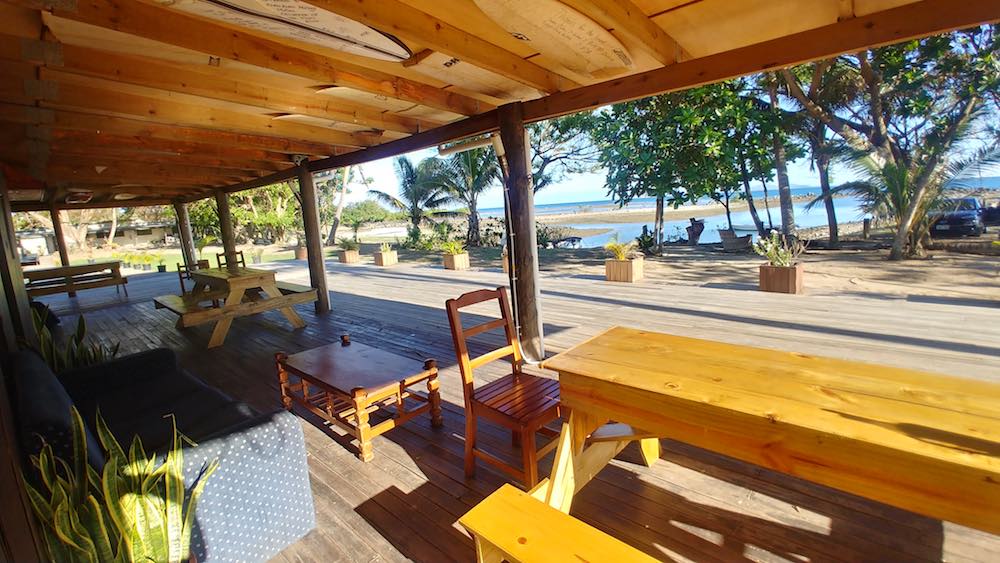It’s peak surf season in Fiji. Usually surfers would come from all over the world to surf the famous “Cloudbreak” and holiday resorts should be packed. But Rendezvous Surf Camp, the launch pad to some of Fiji’s best breaks, excepting four guests, is empty.
One night this week, sitting around drinking kava with the staff (with appropriate social distancing), they fondly recalled years gone by when famous surfers cracked beers at the now deserted bar.

Some locals have taken a “sega na lega” (no worries) approach. With coronavirus restrictions somewhat relaxed and inter-island travel having resumed, many Fijians have taken the opportunity to relax or return to their villages and undertake subsistence farming.
But living off the land won’t pay the rent or meet credit repayments. There is a growing feeling of uncertainty permeating the tropical air. While the Fiji government has implemented measures to soften the blow of Covid-19, there will still be a strain.
I’m regularly asked by locals about when flights will resume with Australia, as though I have ScoMo on speed dial.
With so many Fijians dependent on the tourism industry, which makes up about 40% of Fiji’s GDP, locals are growing anxious. Already the pinch is being felt.
Australian, New Zealand and Fijian government representatives have met to discuss ways the countries can cooperate to jump-start Fiji’s economy. But pre-Covid these discussions had already started with talks of diversifying Fiji’s economy by strengthening incentives and market access in the agriculture and business outsourcing sectors. While coronavirus has been responsible for instigating technology transformation in businesses through forced working from home arrangements, I’m doubtful as to whether the experience of the virus can trigger economic diversification at the rate needed to reboot Fiji’s economy.
In 2019 Fiji was ranked 102 out of 190 in the World Bank’s ease of doing business index. The country is also geographically remote and battles climate change-related challenges, which all present significant barriers to achieving rapid economic transformation.
There seems to be little option available but to restart Fiji’s tourism industry. One safe and measured way of doing that is through Fiji’s inclusion in the mooted trans-Pacific bubble.
For inbound tourism, pre-departure screenings, the compulsory use of contact tracing apps by tourists, as well as designated tourism zones in Fiji, could be employed to reduce the risk.
Annually Fiji receives around half a million tourists from Australia and New Zealand who make up around 65% of total tourist numbers. So by reintroducing flights from Australia and New Zealand, undoubtedly the Fijian tourism industry would see an immediate uptick.
Fiji has been very diligent in its Covid-19 prevention efforts. With now only three active cases, the country may soon be coronavirus free, meaning the real risk is a second wave of infection brought from Australia or New Zealand.
Aside from public health concerns, there is of course a diplomatic and PR risk, as neither Australia nor New Zealand want to be responsible for reintroducing coronavirus to the islands.
Fiji has formally expressed its desire to be a part of the trans-Pacific bubble and New Zealand Prime Minister Jacinda Ardern has said inclusion of the Pacific Islands is “on the cards”. However, Ardern has stressed the importance for Australia and New Zealand to get their health response right first, and to have agreement and support of the Pacific.
But just how long must the Pacific wait? What tangible strategies can Australia and New Zealand feasibly think about now to start implementing for Fiji to be included?
For inbound tourism, pre-departure screenings, the compulsory use of contact tracing apps by tourists, as well as designated tourism zones in Fiji, could be employed to reduce the risk of spreading the virus.
Further, the traffic needs to flow both ways. Given the importance of remittances, its vital for governments to consider how seasonal workers can return to Australia and New Zealand. Governments might also explore opportunities to increase the number of participants in Pacific Labour Mobility Scheme in areas, which could experience greater demand, for example healthcare, childcare as well as aged care.
As the Covid-19 crisis began in Wuhan late last year, much of the world sat back idly, feeling immune and labelling it a ‘China problem’. Fast forward to March this year and coronavirus quickly became a global problem, with governments calling home their citizens, including expats, many of whom had less than 48 hours to leave. The decisions felt very “reactive” to what are admittedly unprecedented events.
The one lesson already clear from the Covid-19 response is the importance of preparedness among friends. More intra-Pacific dialogue about Fiji’s inclusion in the bubble should occur now, rather than leaving the Pacific as an after-thought. As some of the biggest aid donors in the region, Australia and New Zealand cannot afford to be reactive in their efforts to assist Fiji and other countries in the Pacific on the road to economic recovery.

